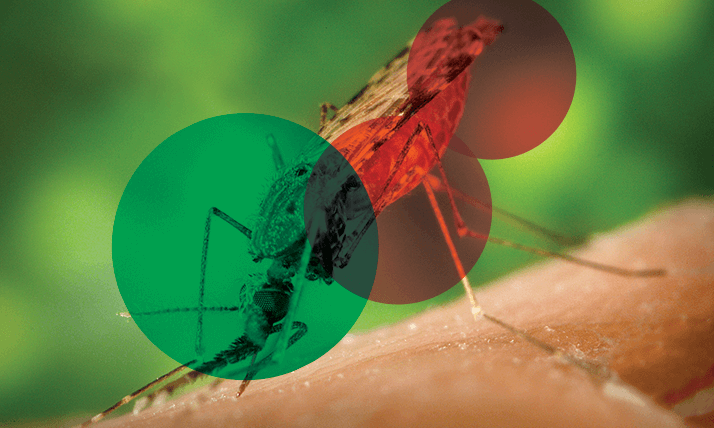
In July, GlaxoSmithKline’s Mosquirix received a positive opinion from the European Medicines Agency’s Committee for Medicinal Products for Human Health. The positive news – and world first – follows nearly 30 years of research and development; the candidate was proposed by GSK scientists in 1987. The vaccine will be used in sub-Saharan Africa and is cleared for use in children aged 6 weeks to 17 months, with clinical trials showing that it should help offer protection from malaria for at least three years (1). The Phase III trial involved more than 16,000 young children and was conducted by 13 research centers in eight African countries. But what happens after the three years are up? According to the PATH Malaria Vaccine Initiative, which partnered with GSK to develop the vaccine, a “considerable” amount of work is being done that could, one day, lead to implementation in different age groups (2). In other words, the new vaccine could just be the starting point.
The vaccine itself is not 100 percent effective. Trial data show that over the first 18 months, following three doses of the vaccine, malaria cases were reduced by around half in children aged 5–17 months at the time of first vaccination, and by 27 percent in infants aged 6–12 weeks. At the study’s end, four doses of the vaccine reduced malaria cases by 39 percent over four years of follow-up in children, and by 27 percent over three years of follow-up in infants. But given that more than 660,000 people die from malaria each year, 90 percent of whom are children under five (3), the vaccine will likely save thousands of lives. Mosquirix is also known as RTS,S, which relates to the science behind the vaccine. The active substance is a recombinant antigen expressed in Saccharomyces cerevisiae, coded RTS,S (4). The RTS,S antigen consists of two proteins (RTS and S) that spontaneously assemble into mixed polymeric particulate structures intracellularly. The vaccine uses a proprietary AS01 adjuvant system that consists of a liquid suspension of liposomes with two immunostimulant components: 3’-O-desacyl-4’-monophosphoryl lipid A (MPL) and Quillaja saponaria 21 (QS21).
When designing the vaccine, researchers targeted the free sporozoite and intra-hepatic stages of the Plasmodium falciparum parasites. The aim was to induce circulating antibodies that reduce the load of sporozoites reaching the liver, as well as to stimulate T-cell responses that promote the destruction of infected liver cells and impede further intracellular parasite development. There are still hurdles to clear before Mosquirix will be made widely available. One of the next steps will be for two independent advisory groups from the World Health Organization (WHO) to review the data for the vaccine and make policy recommendations (potentially by the end of this year) on how it could be used alongside other malaria-prevention tools, assuming national regulatory authorities in sub-Saharan Africa approve it. GSK will also be submitting an application to the WHO for pre-qualification of Mosquirix, which would help inform vaccine-purchasing decisions. The WHO policy recommendations and pre-qualification are both required by Gavi, the Vaccine Alliance, before the vaccine can be introduced into immunization programs supported by UNICEF.
GSK has announced Mosquirix will be sold at a not-for-profit price; the aim is for the price to cover the cost of manufacturing plus a return of around five percent, which will be reinvested into research and development for second-generation malaria vaccines.
References
- GSK, “GSK’s Malaria Candidate Vaccine, Mosquirix (RTS,S), Receives Positive Opinion from European Regulators for the Prevention of Malaria in Young Children in Sub-Saharan Africa,” (July 2015). http://www.gsk.com PATH MVI, “PATH Malaria Vaccine Initiative Welcomes Positive Opinion by European Regulators on GSKs Mosquirix (RTS,S),” (July 2015). http://www.malariavaccine.org Rich Whitworth, “Questioning Our Values,” The Analytical Scientist (March, 2015). theanalyticalscientist.com/ WHO, “RTS,S/AS01 Candidate Malaria Vaccine Summary for the SAGE Meeting,” (October 2009). http://www.who.int
